Backpacking Yosemite. When embarking on a backpacking Yosemite National Park, it is crucial to have the appropriate gear to ensure a successful and enjoyable experience.
A high-quality backpack that fits comfortably and provides sufficient space to carry all essential items is a vital component.
Contents
Opt for a backpack with adjustable straps, a padded hip belt, and multiple pockets for efficient organization.
Furthermore, investing in a lightweight, durable tent and a warm sleeping bag is essential for a comfortable night’s sleep in the wilderness.
A reliable water filtration system is also a necessity, as access to clean drinking water may be limited on the trails.
Other essential gear includes sturdy hiking boots, a headlamp or flashlight, a first aid kit, and a map and compass for navigation.
In addition to the fundamental gear, it is vital to pack clothing that can adapt to various weather conditions.
Layering is essential, so be sure to bring moisture-wicking base layers, insulating mid-layers, and a waterproof outer layer. Do not forget to pack a hat, gloves, and extra socks to maintain warmth and dryness.
Additionally, sunscreen, insect repellent, and a lightweight, packable rain jacket are crucial items to include in your pack.
By being adequately prepared with the right gear, you can ensure a safe and enjoyable backpacking trip in Yosemite National Park.
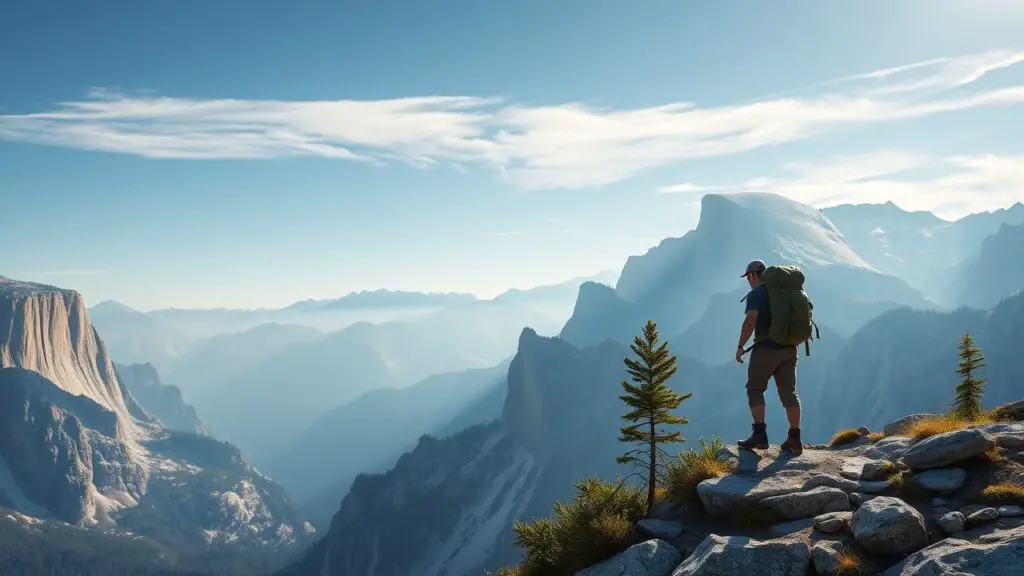
Top Trails and Campsites in Yosemite National Park
Iconic Trails
The park boasts some of the most spectacular trails, including the Mist Trail, which takes hikers past the breathtaking Vernal Fall and Nevada Fall.
Another must-do hike is the Half Dome Trail, offering stunning views of the valley below from the top of the park’s most recognizable granite formation.
Secluded Experiences
For those seeking a more secluded experience, the Cathedral Lakes Trail provides access to pristine alpine lakes and stunning views of the surrounding peaks.
This trail is perfect for those looking to escape the crowds and connect with nature.
Camping Options
Yosemite National Park provides a wide range of camping options for backpackers, from well-known spots like Little Yosemite Valley, Sunrise Lakes, and Clouds Rest.
To more secluded backcountry campsites along the John Muir Trail or in the Tuolumne Meadows area.
These camping options allow backpackers to immerse themselves in the natural beauty of Yosemite and experience the park’s diverse landscapes and ecosystems.
Whether seeking a popular camping spot or a more remote backcountry experience, Yosemite offers something for every backpacker.
No matter which campsite you choose, you’ll be surrounded by the natural beauty that makes Yosemite a special place for backpackers.
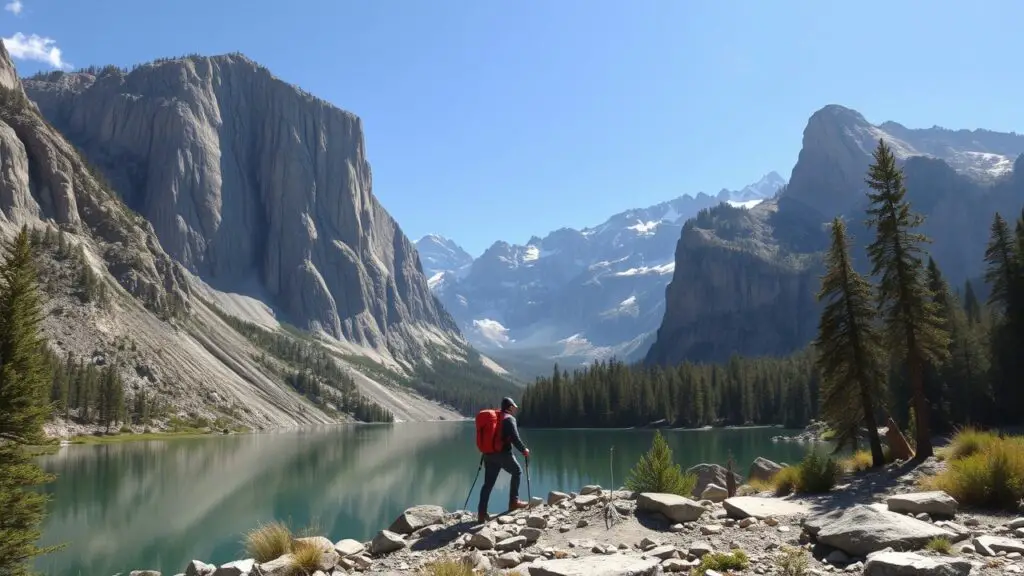
Safety Tips for Backpacking in Yosemite
While backpacking in Yosemite National Park can be an incredible experience, it’s important to prioritize safety while exploring the wilderness.
One of the most important safety tips is to be prepared for changing weather conditions.
Yosemite’s high elevation and mountainous terrain can lead to rapidly changing weather, so be sure to pack layers and be prepared for rain, snow, and cold temperatures.
Additionally, it’s crucial to stay hydrated and well-nourished while hiking, so be sure to bring plenty of water and high-energy snacks to keep your energy levels up.
Another key safety tip is to be aware of your surroundings and wildlife while on the trails. Yosemite is home to a variety of wildlife, including black bears, mountain lions, and rattlesnakes.
To minimize your risk of encountering dangerous wildlife, be sure to make noise while hiking, store food properly at night, and carry bear spray in case of an encounter.
It’s also important to stay on designated trails and be mindful of your footing while hiking in rocky or uneven terrain.
By following these safety tips, you can ensure that your backpacking trip in Yosemite is both thrilling and safe.
Leave No Trace: How to Minimize Your Impact in Yosemite
As one of the most beloved national parks in the United States, it’s important for backpackers in Yosemite to minimize their impact on the environment while exploring the wilderness.
One of the most important principles of Leave No Trace is to pack out all of your trash and waste.
Be sure to bring a lightweight trash bag with you on the trails and pack out all of your garbage, including food wrappers, toilet paper, and any other waste you generate while camping.
Additionally, it’s important to dispose of human waste properly by digging a cathole at least 6-8 inches deep and at least 200 feet away from water sources.
Another key principle of Leave No Trace is to respect wildlife and their natural habitats. Be sure to observe wildlife from a safe distance and avoid feeding or approaching animals while on the trails.
It’s also important to minimize your impact on vegetation by staying on designated trails and avoiding trampling fragile plants or disturbing natural habitats.
By following these principles of Leave No Trace, you can help preserve the natural beauty of Yosemite for future generations of backpackers to enjoy.
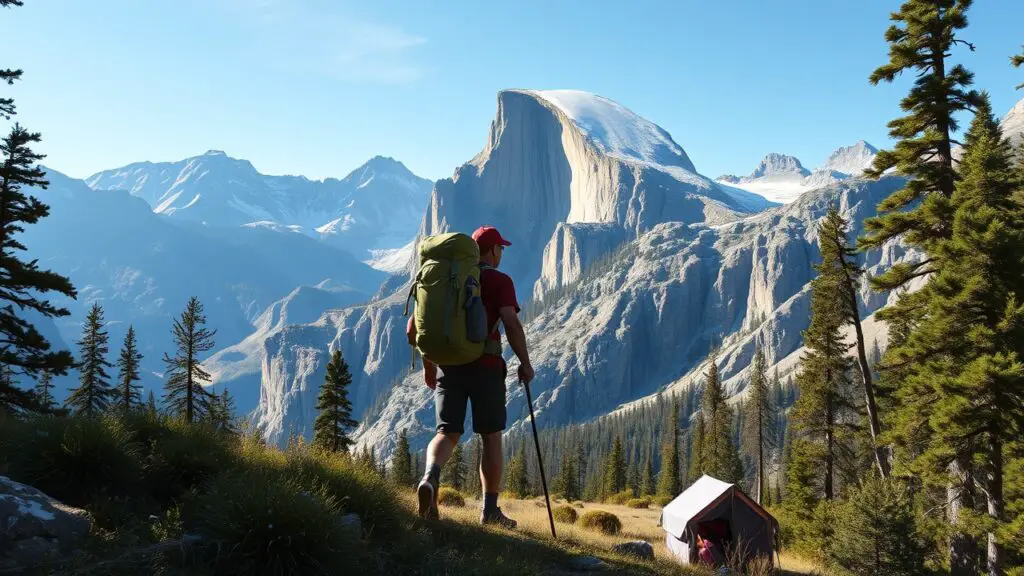
Wildlife Encounters: What to Do and How to Stay Safe
While encountering wildlife in Yosemite can be an unforgettable experience, it’s important to know how to react in order to stay safe for both yourself and the animals.
One of the most important things to remember when encountering wildlife is to keep your distance and never approach or feed wild animals.
Bears are common in Yosemite, so it’s crucial to store food properly in bear-proof containers and make noise while hiking to avoid surprising a bear on the trail.
If you do encounter a bear while backpacking in Yosemite, it’s important to remain calm and slowly back away while speaking in a calm voice.
If you encounter a bear, it’s important to remain calm and avoid running or playing dead if attacked. Instead, if you have bear spray available, use it to deter the bear.
Try to appear as large as possible by waving your arms and making loud noises. You can also use a jacket or backpack as a barrier between you and the bear.
It’s important to slowly back away from the bear and avoid making direct eye contact. If the bear charges at you, stand your ground and continue to make yourself appear as large and intimidating as possible.
Always be prepared and aware of your surroundings when in bear country. Additionally, it’s important to be aware of other potentially dangerous wildlife in Yosemite, such as mountain lions and rattlesnakes.
By being informed about how to react in wildlife encounters, you can ensure that your backpacking trip in Yosemite is both safe and respectful of the park’s natural inhabitants.
Planning Your Backpacking Trip: Permits, Reservations, and Regulations
Obtaining a Wilderness Permit
All overnight backpacking trips in Yosemite require a wilderness permit, which can be obtained through an online reservation system or at one of the park’s wilderness centers.
It’s crucial to apply for permits well in advance, as popular trails and campsites can fill up quickly during peak season.
Understanding Park Regulations
In addition to obtaining a wilderness permit, it’s vital to be aware of any specific regulations or restrictions that may apply to your chosen trail or campsite.
Some areas of the park have specific rules regarding camping locations, campfires, and food storage, so be sure to familiarize yourself with these regulations before setting out on your trip.
Planning for a Smooth Trip
By planning ahead and being informed about permits, reservations, and regulations, you can ensure that your backpacking trip in Yosemite goes smoothly and according to park guidelines.
Additionally, it’s essential to be aware of any seasonal closures or trail conditions that may affect your planned route.
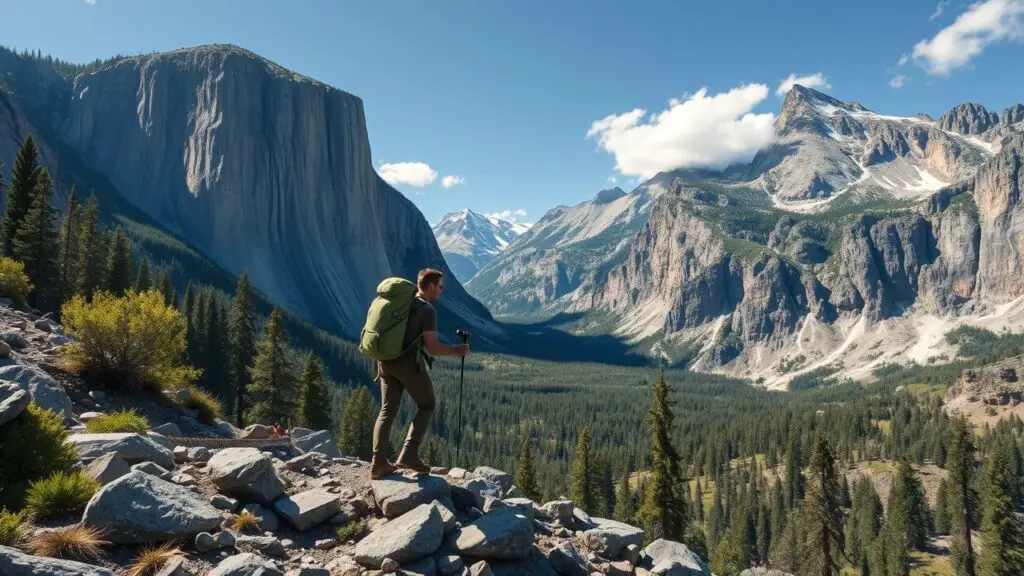
Insider Tips for a Memorable Backpacking Experience in Yosemite
For those looking to make the most of their backpacking trip in Yosemite National Park, there are several insider tips that can help enhance your experience.
One key tip is to visit during the shoulder seasons of spring or fall, when crowds are smaller and weather conditions are often more favorable for hiking.
Additionally, consider exploring lesser-known areas of the park such as Hetch Hetchy Valley or the Clark Range for a more secluded wilderness experience.
Another insider tip is to take advantage of ranger-led programs and guided hikes offered by the park service.
These programs can provide valuable insight into the park’s natural history and geology, as well as opportunities to explore off-the-beaten-path areas with an experienced guide.
Additionally, consider bringing a camera or sketchbook to capture the stunning landscapes and wildlife you encounter along the trails.
By following these insider tips, you can ensure that your backpacking trip in Yosemite is truly unforgettable and filled with unique experiences that will stay with you long after you’ve left the park.
Backpacking in Yosemite National Park offers an unparalleled opportunity to explore some of the most stunning wilderness areas in the United States.
By being prepared with essential gear, choosing top trails and campsites, prioritizing safety and Leave No Trace principles, being informed about wildlife encounters and regulations.
And taking advantage of insider tips for an unforgettable experience, you can ensure that your backpacking trip in Yosemite is both safe and memorable.
Whether you’re an experienced backpacker or new to wilderness exploration, Yosemite offers something for everyone.
From iconic landmarks like Half Dome and El Capitan to secluded alpine lakes and meadows waiting to be discovered.
With careful planning and a spirit of adventure, backpacking in Yosemite is an experience that will stay with you for a lifetime.
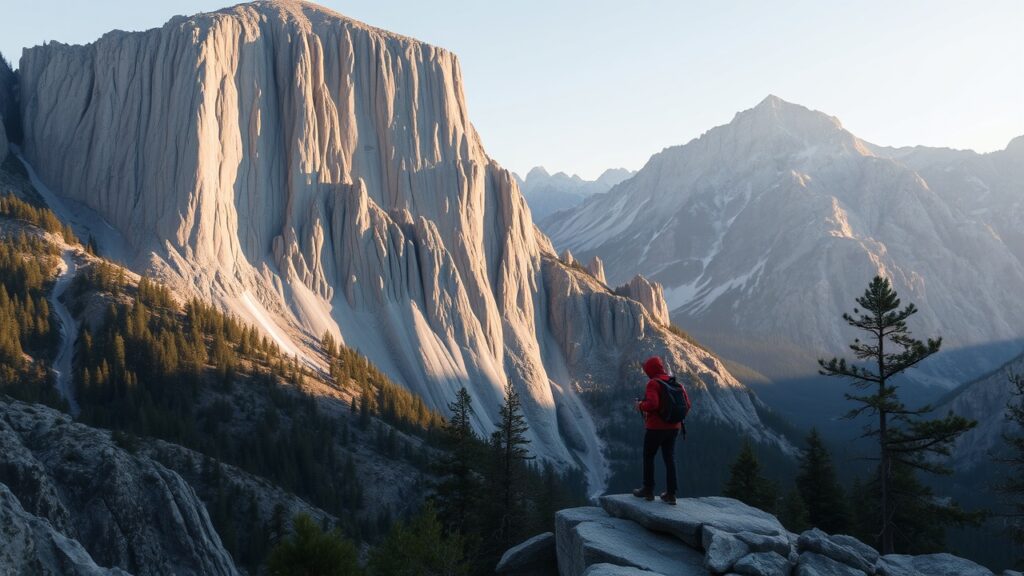
Conclusion
In conclusion, backpacking Yosemite offers an unparalleled opportunity to immerse oneself in the natural splendor and diverse ecosystems of one of America’s most iconic national parks.
Whether you’re a seasoned hiker or a novice adventurer, the park’s extensive network of trails provides something for everyone, from challenging ascents to serene valley walks.
The experience of backpacking Yosemite is not just about the physical journey but also about connecting with nature, finding solitude, and creating lasting memories.
As you plan your trip, remember to respect the environment, follow Leave No Trace principles, and prepare adequately for the varying conditions you may encounter.
By doing so, you’ll ensure that Yosemite remains a pristine wilderness for future generations to enjoy. Happy trails!

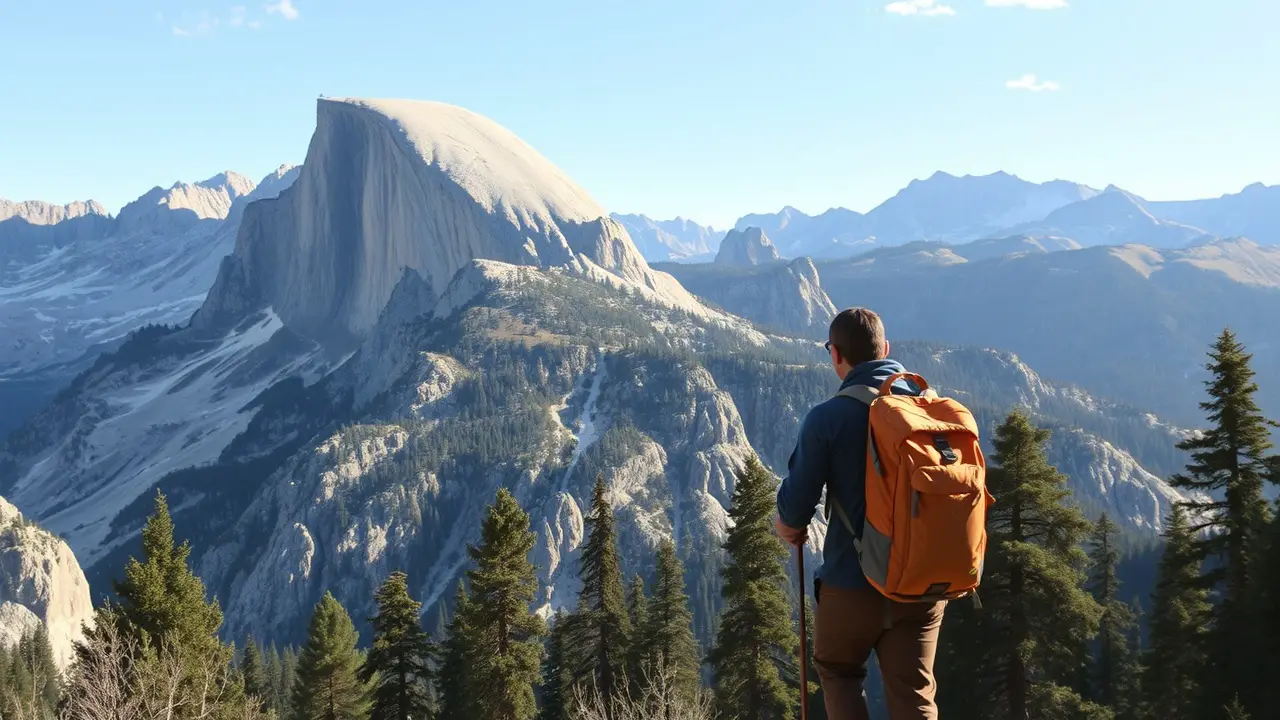





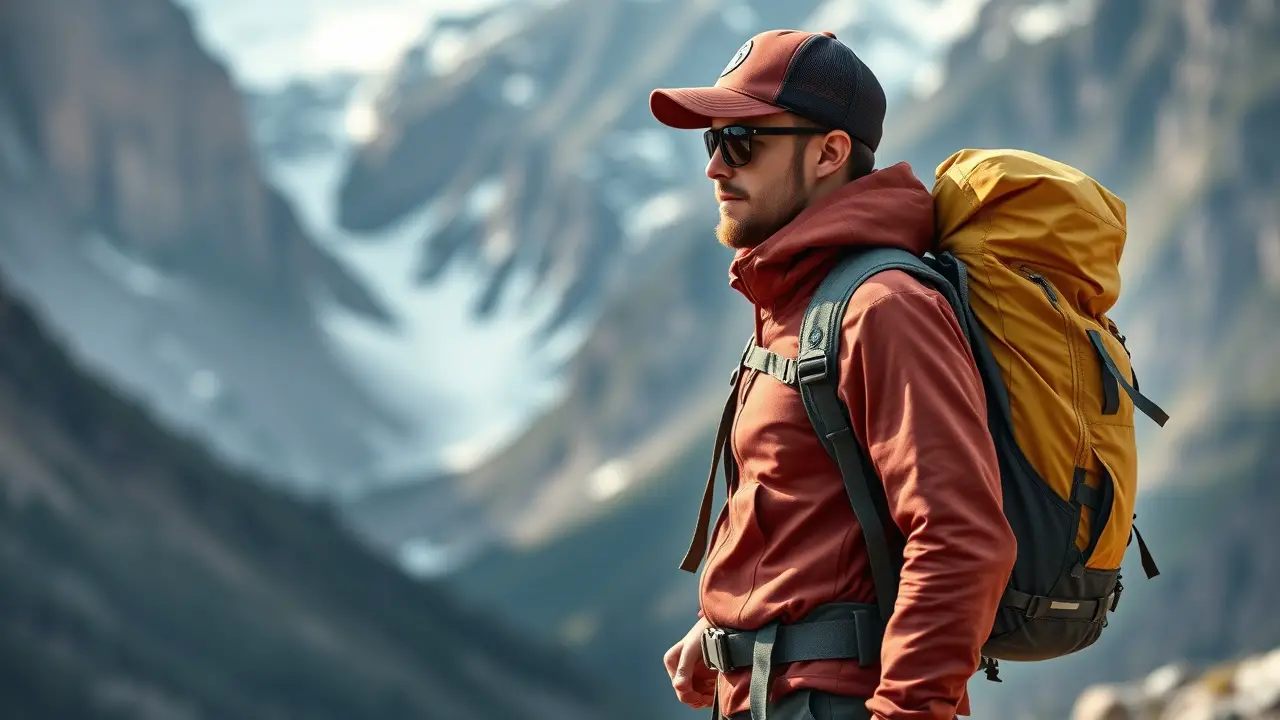
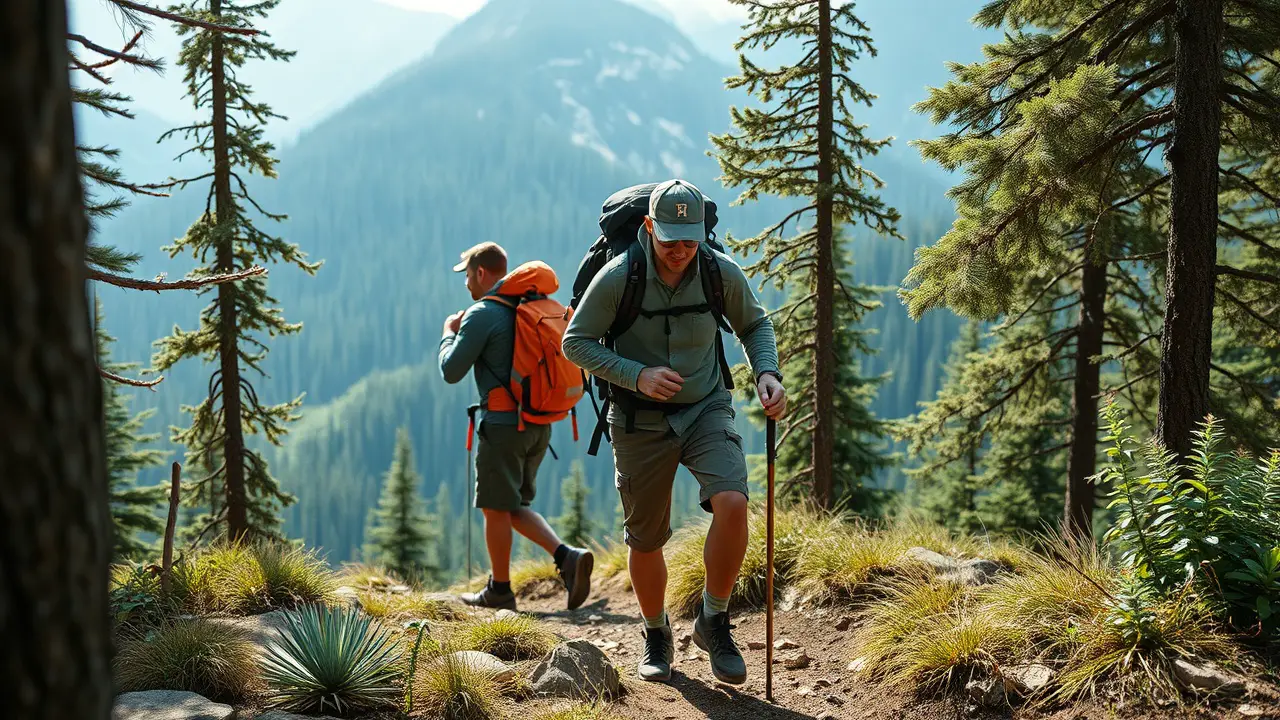
Leave a Reply